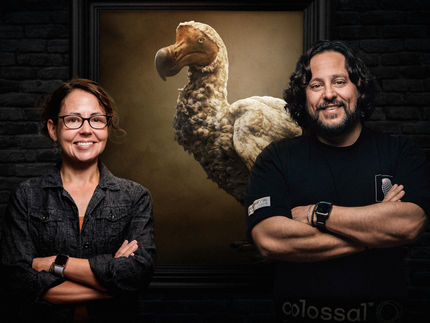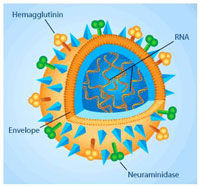For chemicals, mega is out and bio is in
Engineers weigh in on ‘smaller is better’ chemical production
Ramon Gonzalez sees flares burning methane from the stacks above Houston’s refineries and thinks, “What a waste.” He believes that methane represents an opportunity for biomanufacturing that should not be missed.
The Rice University professor and director of its new Advanced Biomanufacturing Initiative, aka iBIO, already knows what an entire sector of the chemical manufacturing industry is beginning to realize: That waste methane can and should be turned into profit.
Given the steady advance of biomanufacturing — the use of wild-type or genetically modified bacteria to turn carbon-rich methane and other substances into valuable chemicals — it should be possible to produce chemicals on a smaller, more environmentally friendly scale, he said. But it would require a shift from current thinking that economic viability can come only from the economies of unit scale afforded by large facilities.
Biomanufacturing’s promise is the subject of a perspective paper by Gonzalez and his Rice colleagues, senior research scientist James Clomburg and graduate student Anna Crumbley.
Gonzalez, who specializes in the creation of genetically engineered bacteria for biotechnology, has taken on the role of a seer informed both by his own research and by his years as a program director at the government’s Advanced Research Projects Agency-Energy, where he sharpened his eye for emerging technologies.
In the online paper the authors point out that advances in metabolic engineering, genomics and industrial process design have pushed industrial biomanufacturing closer than ever to widespread adoption. They argue it could and should go much further.
“Biotech in general has four branches of applications: Medical, agricultural, environmental and industrial, the one in which we primarily work,” said Gonzalez, a professor of chemical and biomolecular engineering and of bioengineering based at Rice’s BioScience Research Collaborative. “The industrial side aims at generating molecules that are produced these days from many feedstocks, including oil and natural gas.
“What has not been explored much in this space is what biology brings to the table, regardless of whether you use starting materials that are renewable or not.”
Renewable feedstocks include corn and lignocellulosic biomass used to produce ethanol and other molecules. Nonrenewables include oil and gas used to produce thousands of chemicals required by industry, typically at immense facilities that offer economies of scale. Gonzalez said small-scale biomanufacturing tends to be associated primarily with renewable sources, but he and his team don’t necessarily see that as the only use of the growing technology.
“You don’t need to go big,” he said. “This is an area that almost nobody explores. Actually, companies are doing the contrary: They are saying, ‘Let’s go big with biology’ and forcing it to do things that are not a natural fit for biomanufacturing. That’s not necessarily what biology is good at.”
He said that among the findings, the most surprising may be that waste methane burned off in 2014 alone could have been transformed via biomanufacturing into seven important organic chemicals — methanol, ethylene, propylene, butadiene, xylene, benzene and toluene — in amounts sufficient to meet 100 percent of industry’s needs that year.
“Between flared methane, waste-treatment facilities situated near population centers and agricultural facilities around the country, we have a lot of feedstock,” Gonzalez said. “You might say these are little things, but when you add them up — and we have run that number — we find we can produce most of the chemicals that we need today.”
Few if any of these feedstocks are easily accessible to megafacilities that require the efficient delivery of large quantities of mostly fossil-based raw materials, he said. In contrast, biomanufacturing facilities operate at much smaller scales and require quantities of feedstocks that match the output of distributed (and often wasted) methane-generating sites.
A distribution of small factories puts them closer not only to feedstocks but also to point of need. That would also facilitate faster innovation and a more rapid response to the needs of the market, Gonzalez said. The lower cost of entry would allow for a more diverse group of technology players, he said.
He noted as an example that small, strategically placed bioconversion facilities have increased the nation’s ethanol output tenfold over the past two decades.
The researchers pointed out that environmental, geopolitical and economic factors are already pushing manufacturers to look at smaller, better-distributed solutions to pressing needs. The science of programming bacteria like fast-growing Escherichia coli to make chemicals using genome-editing techniques like CRISPR/Cas-9 is rapidly catching up to the demand, Gonzalez said.
“Do you need to produce millions of tons of chemicals?” he asked. “How are you going to do that if you have a small plant and still make an impact? Well, if you have hundreds or thousands of small plants, of course you’re going to make an impact.
“You can leverage an ‘economies of unit number’ model, which can be defined as a shift from a small number of high-capacity units or facilities to a large number of units or facilities operating at a smaller scale. The good news is that, as we demonstrate in this paper, industrial biomanufacturing can both support and benefit from economies of unit number.”
Gonzalez said developing nations may benefit greatly from decentralized biomanufacturing, and then he looked even farther afield.
“The atmosphere of Mars is 95 percent carbon dioxide, and to plant a flag there, you really have to start with that and solar energy, whether you like it or not,” he said. “And you can do it with something like I’m describing here.
“You don’t need to bring a chemical plant to Mars. You could bring microbes in a vial that replicate and grow and produce what you need from the abundant carbon already there.”





















































